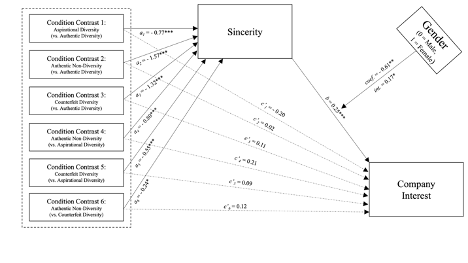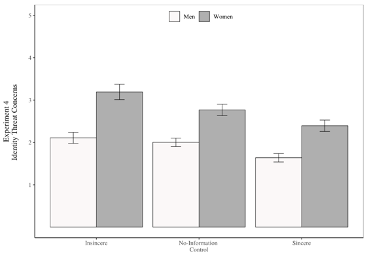New paper out today at #JPSP. Across 4 experiments, we investigated how women (and men) perceive tech companies that #counterfeit their gender diversity—by this, we mean companies that exaggerate gender diversity (inflating the # of women) in their recruitment ads (1/n)
As many of us know, women are underrepresented in tech and computing fields. Aware of this problem, many tech orgs seek diversification strategies to effectively attract and retain talented female workers. (2/n)
Diversity and inclusion consultants offer wide-ranging advice. Perhaps easiest, companies are often encouraged to display pictorial gender diversity in their recruitment materials. This is because portraying diversity can be an effective method of attracting diversity. (3/n)
BUT if women expect a gender-diverse environment—due to gender-diverse advertising—and instead learn that women are actually underrepresented, how will they experience this mismatch? Will they just overlook it? (4/n)
OR will it raise concerns that they will be stereotyped, disrespected, and otherwise mistreated there? Will it undermine their interest in the organization? Heidi Williams ( @hwilliams_12), Mary Murphy ( @mcmpsych), and I investigated. (5/n)
Counterfeit diversity companies were compared to (a) companies that authentically portrayed a high degree of gender diversity (authentic diversity), (b) companies that authentically portrayed a low degree of gender diversity (authentic non-diversity)... (6/n)
...and (c) companies that indicated a lack of diversity now, but aspired to increase their gender diversity in the future (aspirational diversity) (7/n)
We found that sincerity perceptions mattered a lot! Women and men perceive authentic diversity companies to most sincerely value gender diversity, followed next by aspirational diversity companies, followed last by the counterfeit and authentic non-diversity companies. (8/n)
To the extent that companies are perceived as sincere, women anticipate having fewer identity threat concerns there (e.g., fewer belonging, stereotyping, and marginalization concerns)… (9/n)
…and both women and men (but especially women) express greater interest in working for companies that are perceived to sincerely value gender diversity (10/n).
We even experimentally manipulated sincerity—portraying a Counterfeit Diversity company as either insincere, sincere, or neither (no-info control). We again found that companies described (and construed) as more sincere engendered less identity threat among women... (11/n).
As I said, scholars and practitioners have recommended that organizations portray a diverse image in order to attract members of underrepresented groups, with the implication being that portraying an exaggerated level of diversity will, on balance, be perceived positively (13/n).
Our research challenges this perspective. We show that the functionality of a diversity cue depends on whether or not it is construed as a sincere signal that the organization values diversity (14/n).
Counterfeiting diversity is attractive as a recruitment strategy for non-diverse companies, in part, because it is easy to implement. (15/n).
Despite this ease, our research shows that counterfeiting diversity is often ineffective, because once people learn it is counterfeit, this signals that the company is insincerely interested in gender diversity, engendering threat and decreasing interest in the company. (16/n).
Organizations cannot reasonably expect that prospective employees (and possibly consumers) will be satisfied with empty diversity gestures, like counterfeit diversity. Instead, their efforts must be perceived as (and ideally *actually be*) sincere. (17/n).
Again, I want to extend big shoutout to my fabulous coauthors, Heidi Williams ( @hwilliams_12) and Mary Murphy ( @mcmpsych)! (18/n).
See the JPSP version here: https://bit.ly/2HN7upV ">https://bit.ly/2HN7upV&q... If you& #39;re stuck behind a paywall, the preprint version can be found here: https://psyarxiv.com/zdhxa/ ">https://psyarxiv.com/zdhxa/&qu... (19/19)

 Read on Twitter
Read on Twitter






